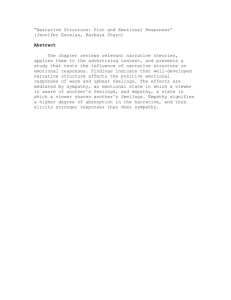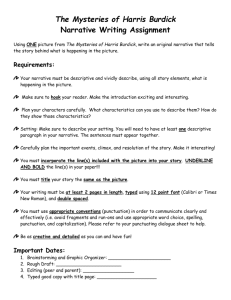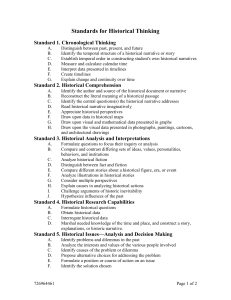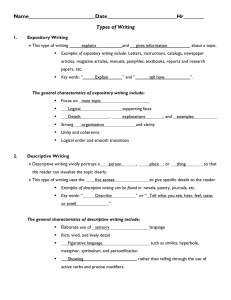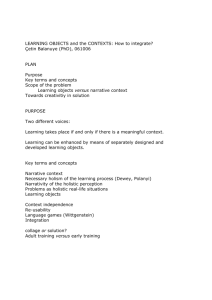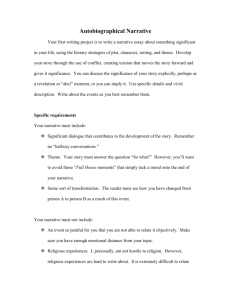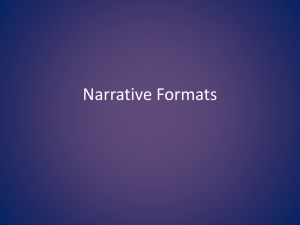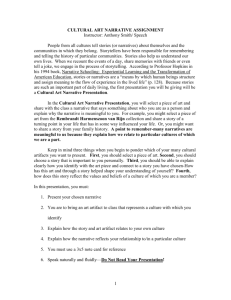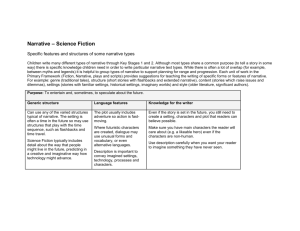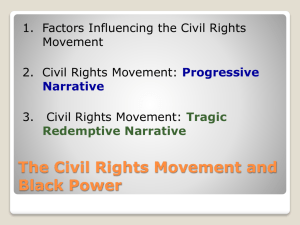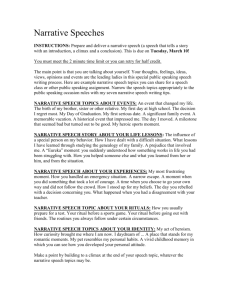Research Paper Outli..
advertisement
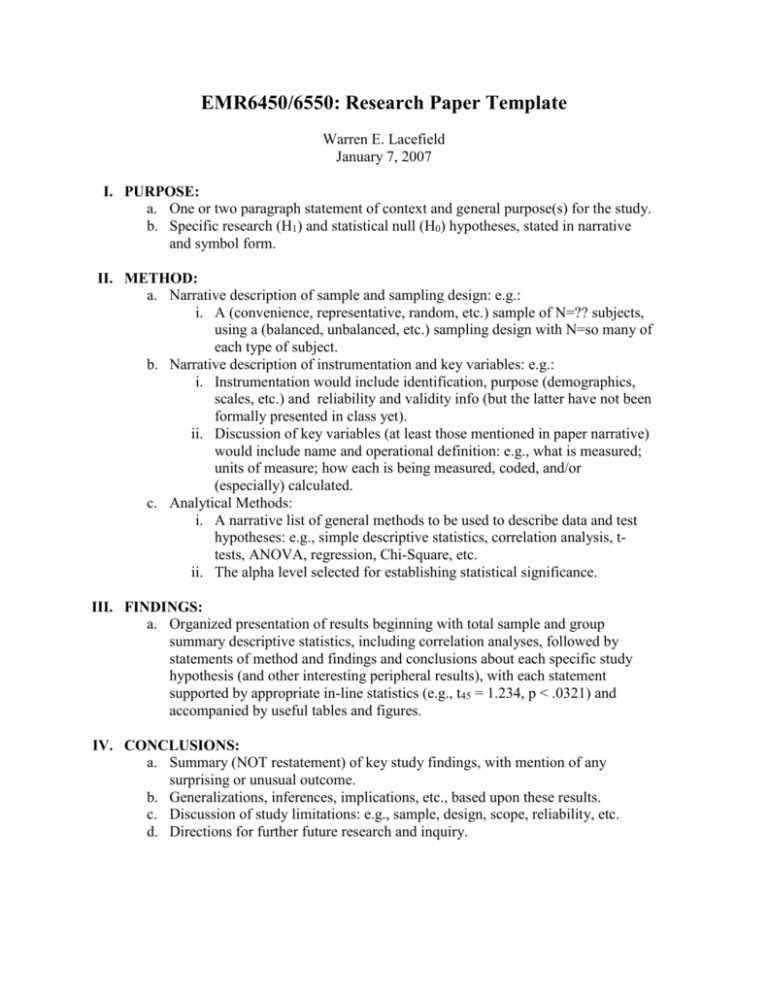
EMR6450/6550: Research Paper Template Warren E. Lacefield January 7, 2007 I. PURPOSE: a. One or two paragraph statement of context and general purpose(s) for the study. b. Specific research (H1) and statistical null (H0) hypotheses, stated in narrative and symbol form. II. METHOD: a. Narrative description of sample and sampling design: e.g.: i. A (convenience, representative, random, etc.) sample of N=?? subjects, using a (balanced, unbalanced, etc.) sampling design with N=so many of each type of subject. b. Narrative description of instrumentation and key variables: e.g.: i. Instrumentation would include identification, purpose (demographics, scales, etc.) and reliability and validity info (but the latter have not been formally presented in class yet). ii. Discussion of key variables (at least those mentioned in paper narrative) would include name and operational definition: e.g., what is measured; units of measure; how each is being measured, coded, and/or (especially) calculated. c. Analytical Methods: i. A narrative list of general methods to be used to describe data and test hypotheses: e.g., simple descriptive statistics, correlation analysis, ttests, ANOVA, regression, Chi-Square, etc. ii. The alpha level selected for establishing statistical significance. III. FINDINGS: a. Organized presentation of results beginning with total sample and group summary descriptive statistics, including correlation analyses, followed by statements of method and findings and conclusions about each specific study hypothesis (and other interesting peripheral results), with each statement supported by appropriate in-line statistics (e.g., t45 = 1.234, p < .0321) and accompanied by useful tables and figures. IV. CONCLUSIONS: a. Summary (NOT restatement) of key study findings, with mention of any surprising or unusual outcome. b. Generalizations, inferences, implications, etc., based upon these results. c. Discussion of study limitations: e.g., sample, design, scope, reliability, etc. d. Directions for further future research and inquiry.





